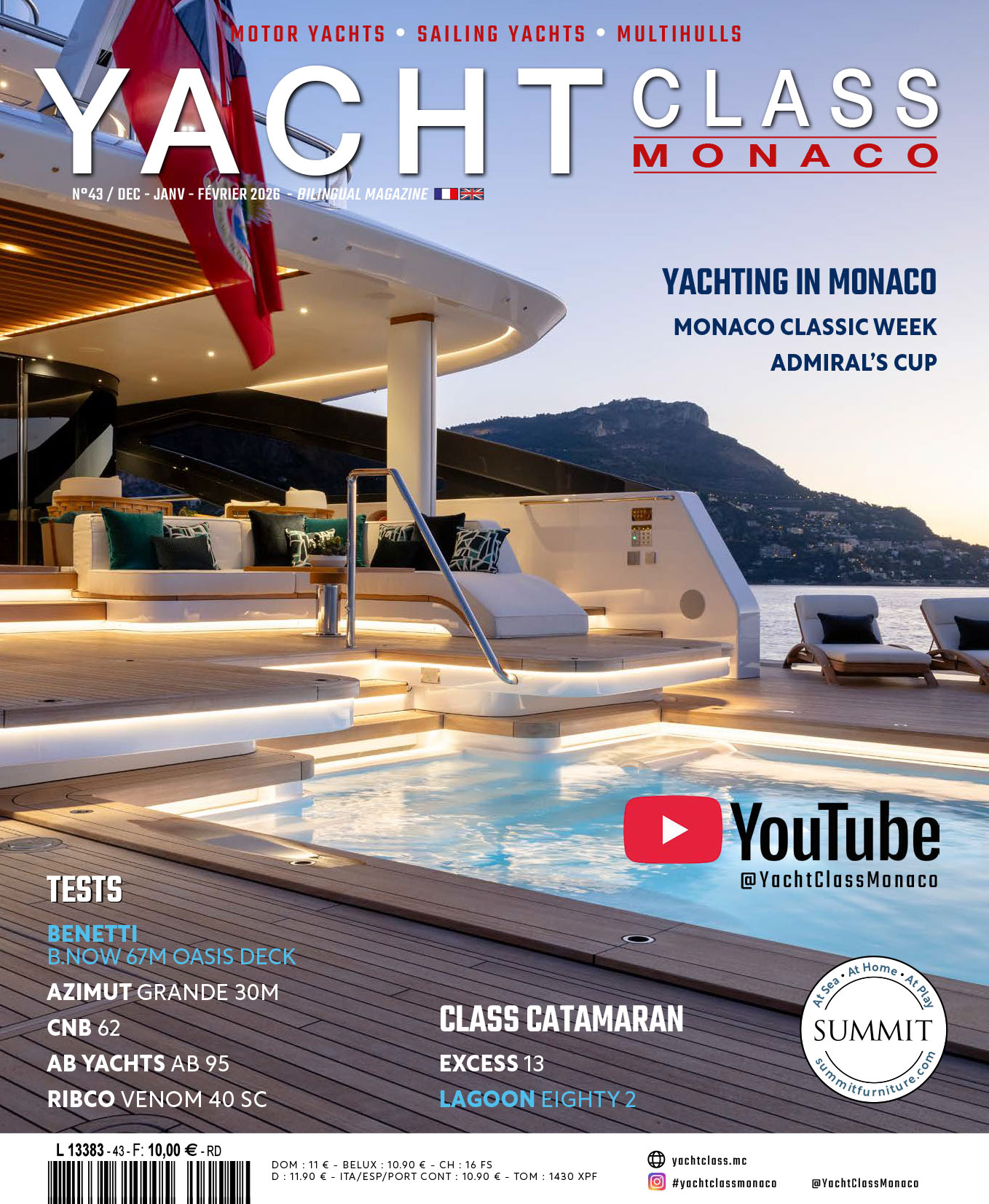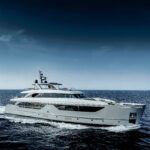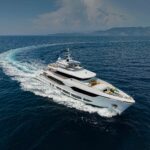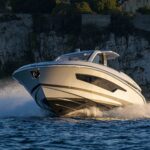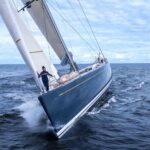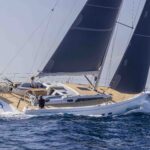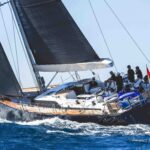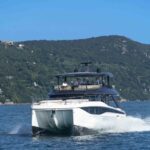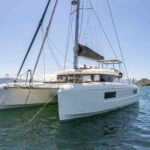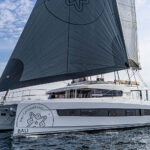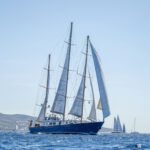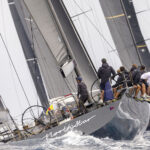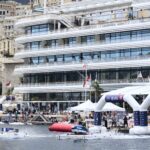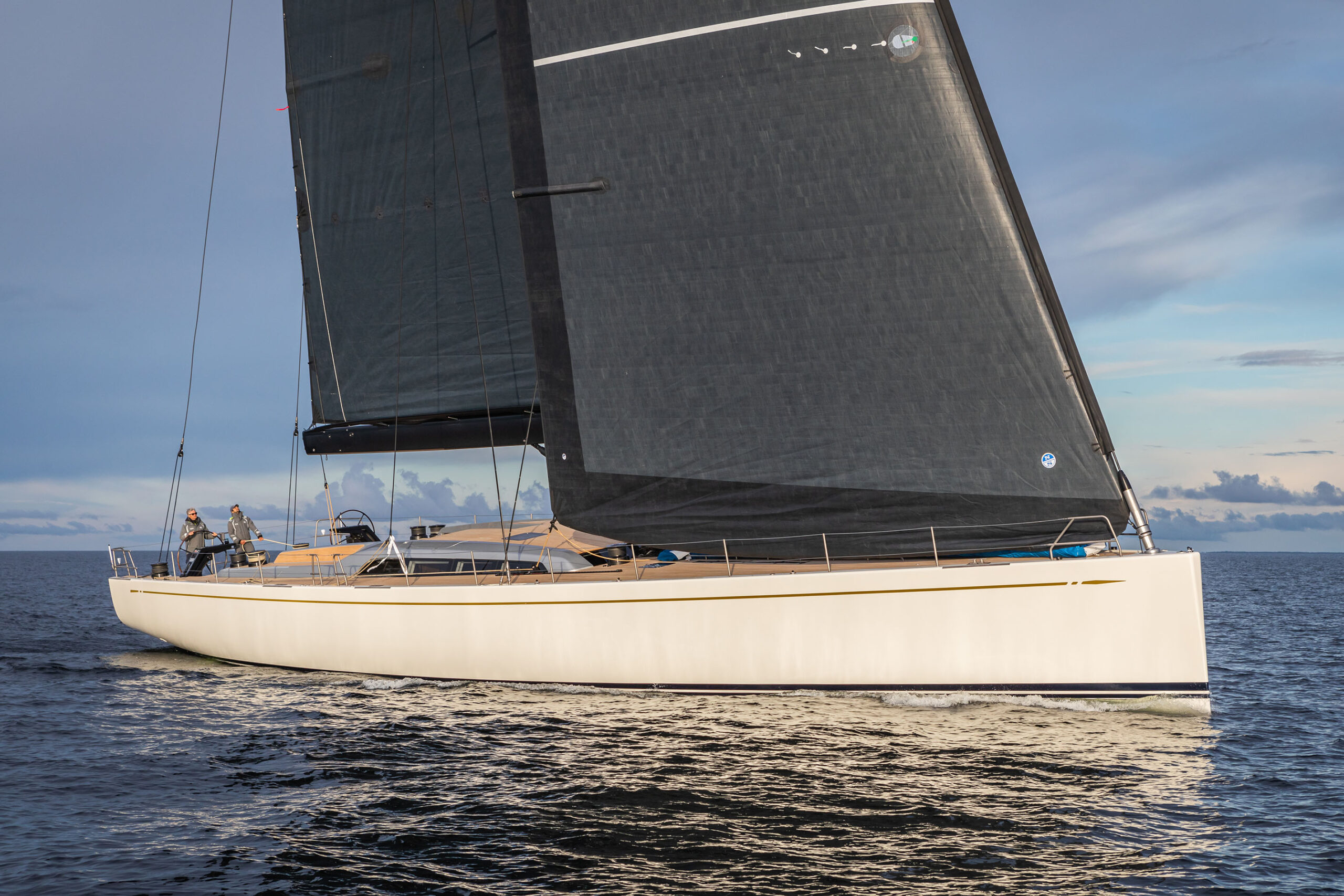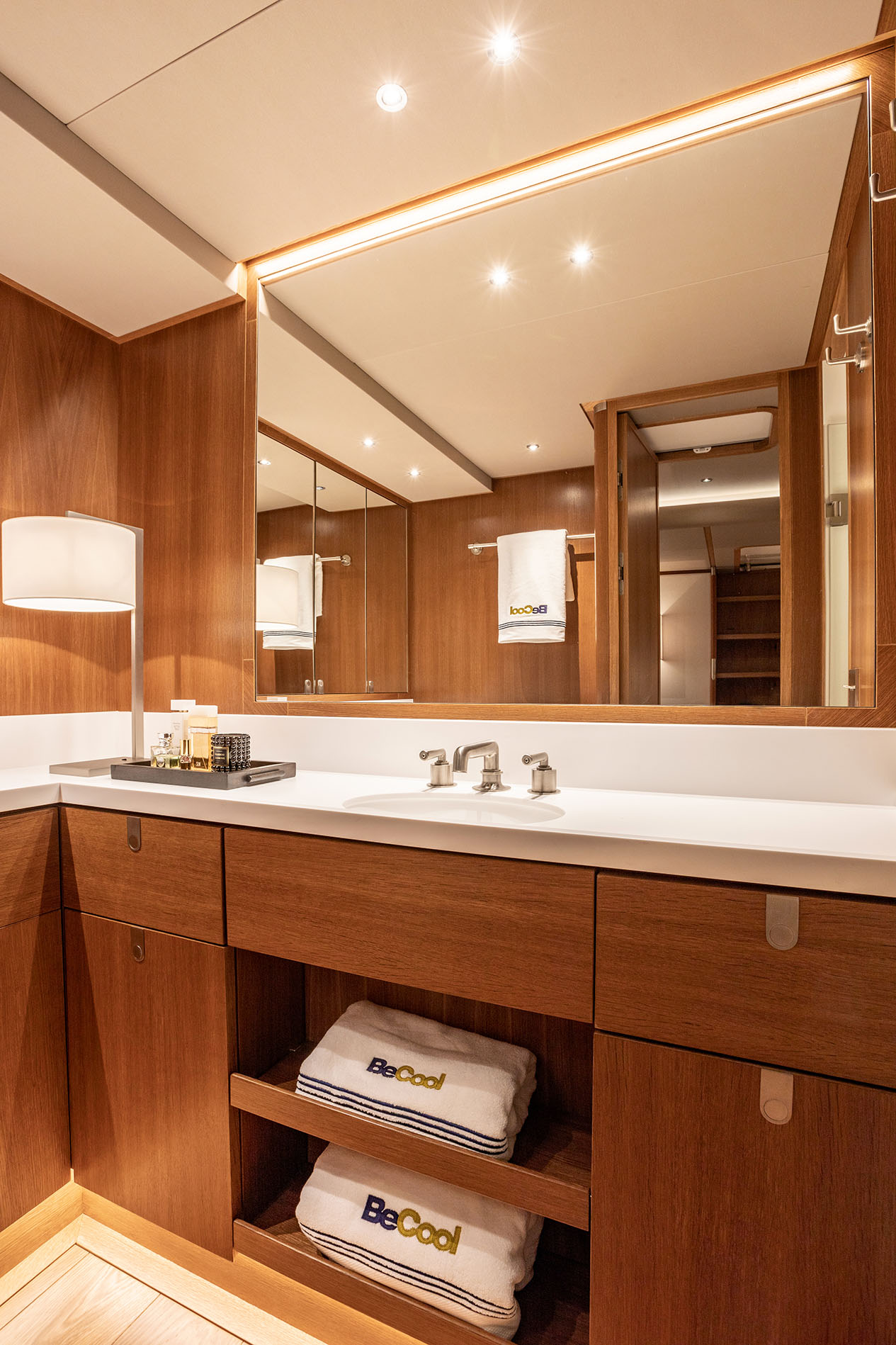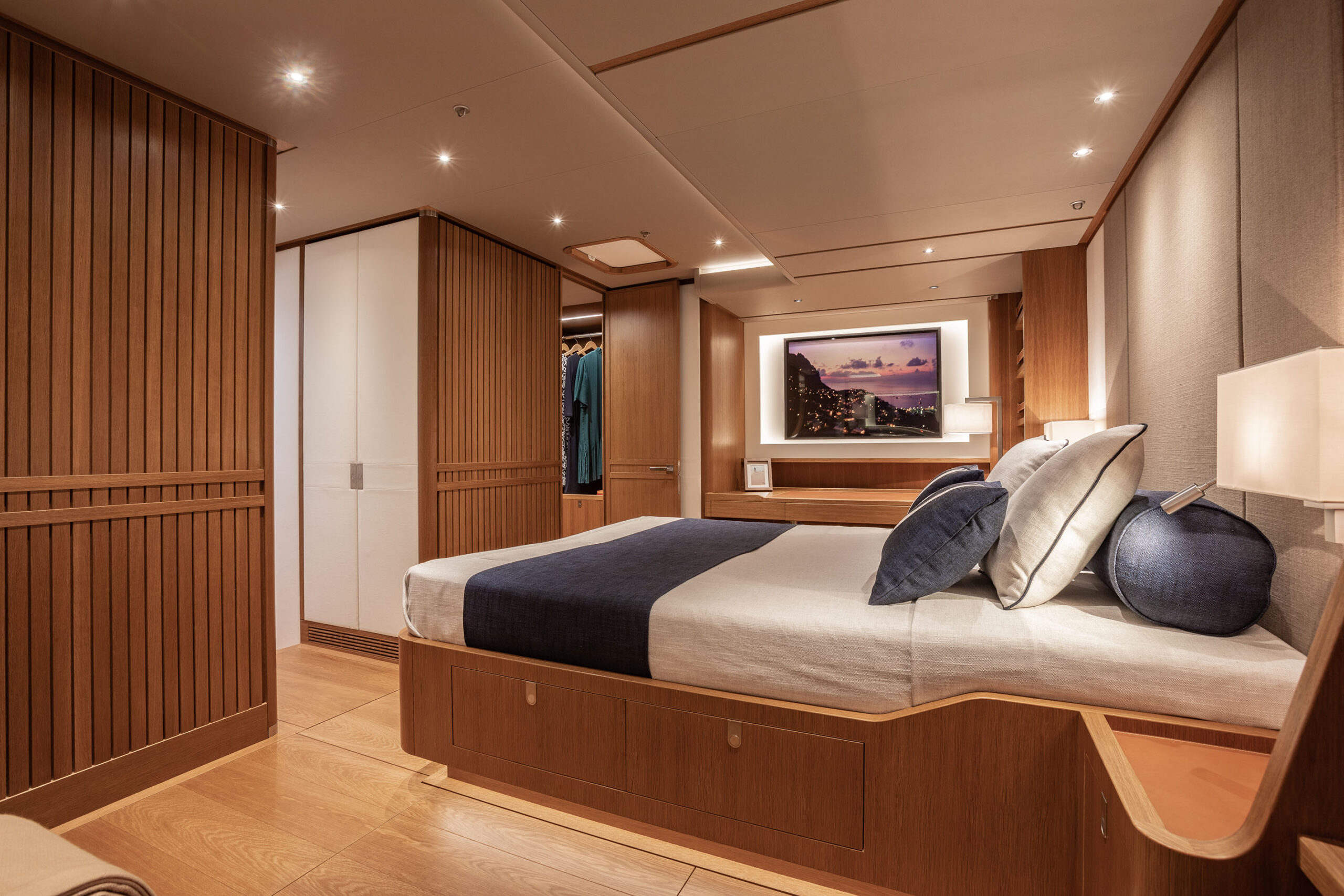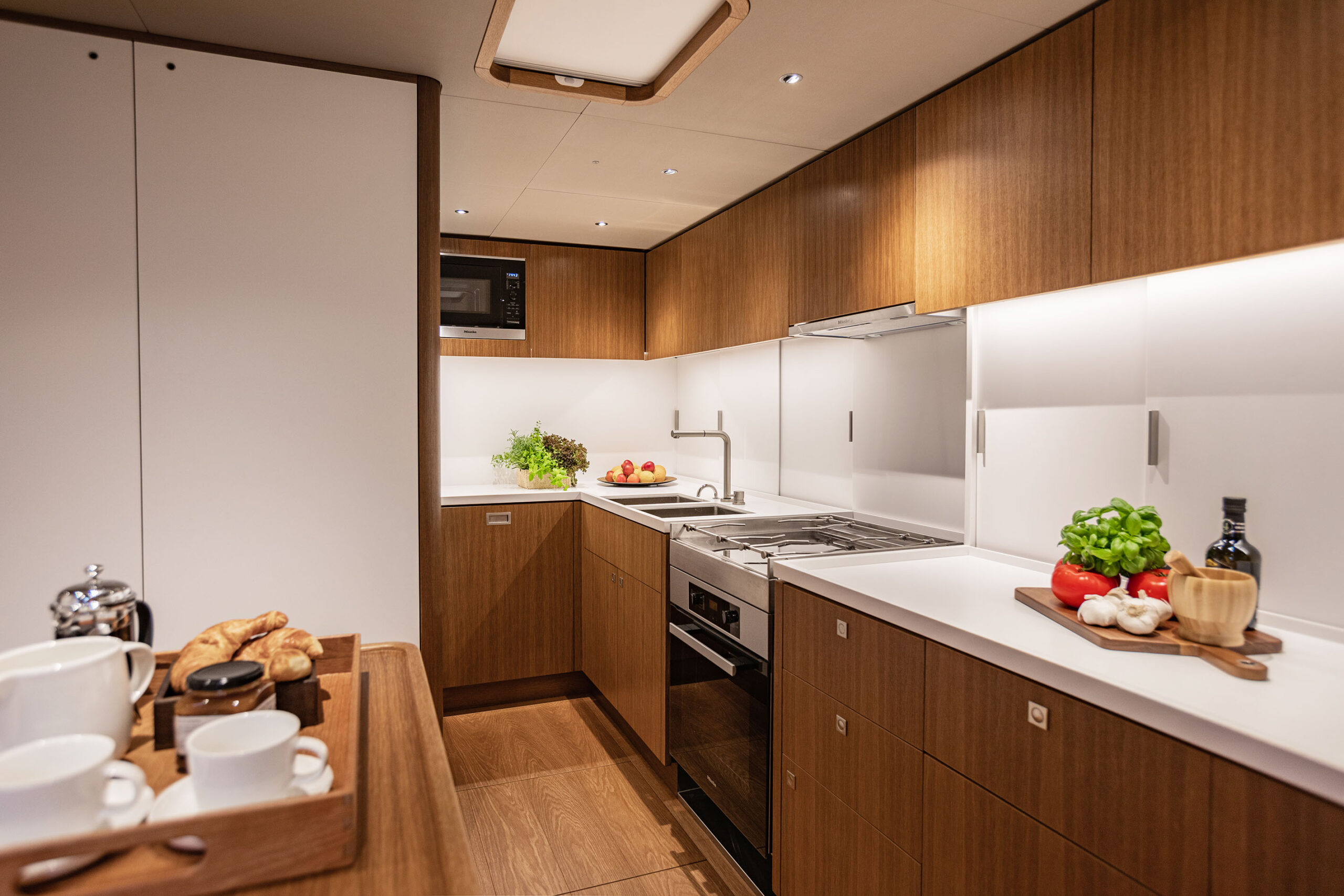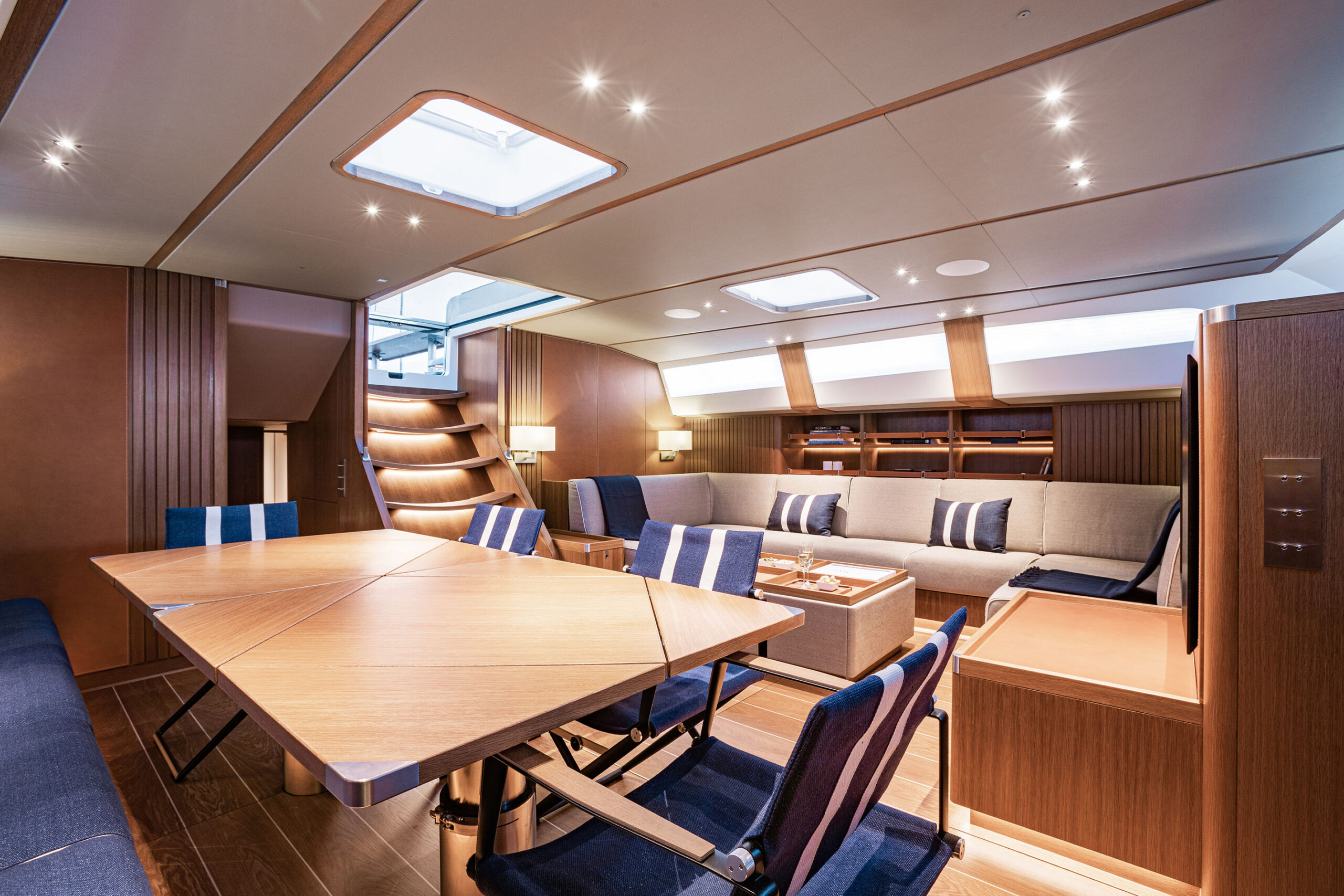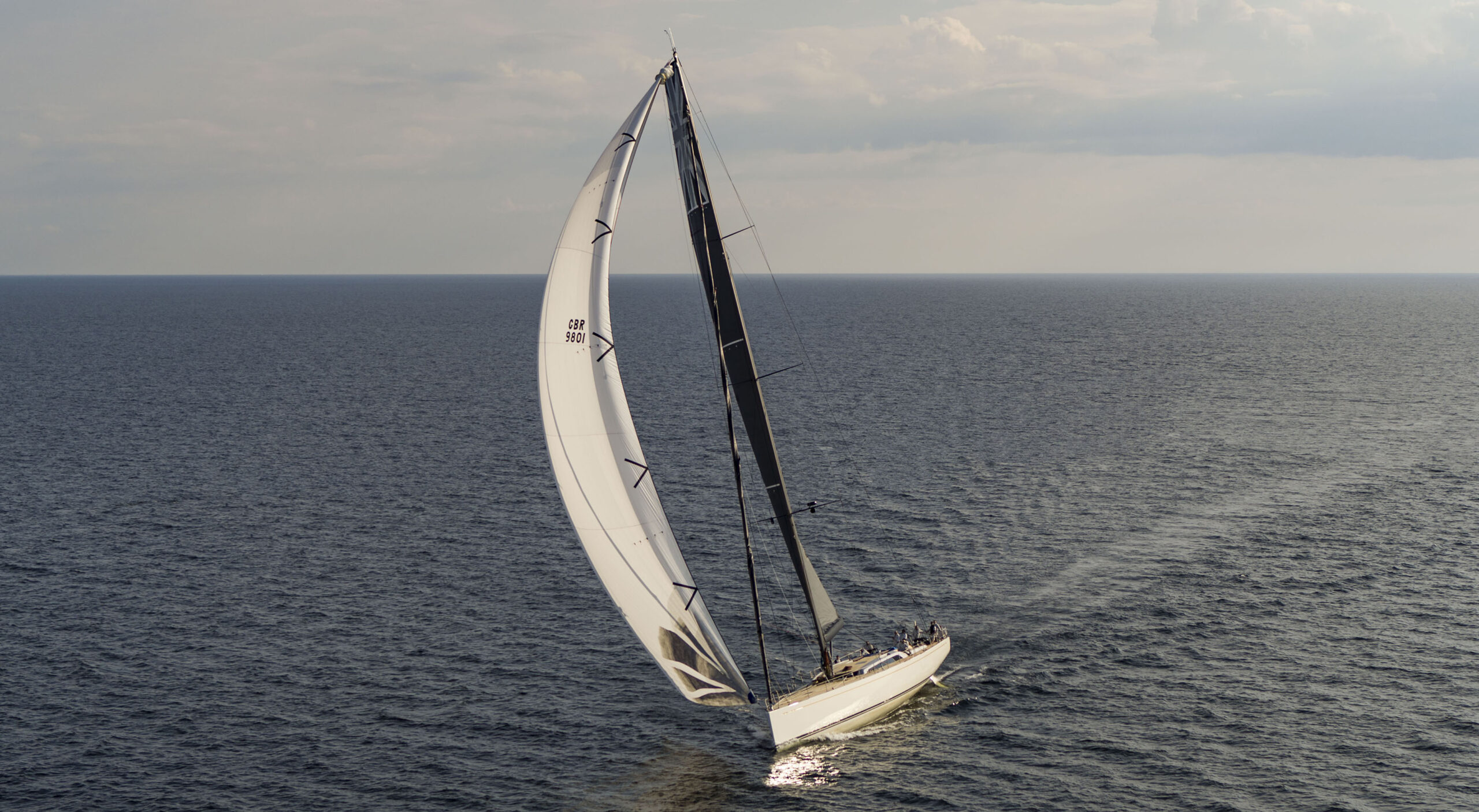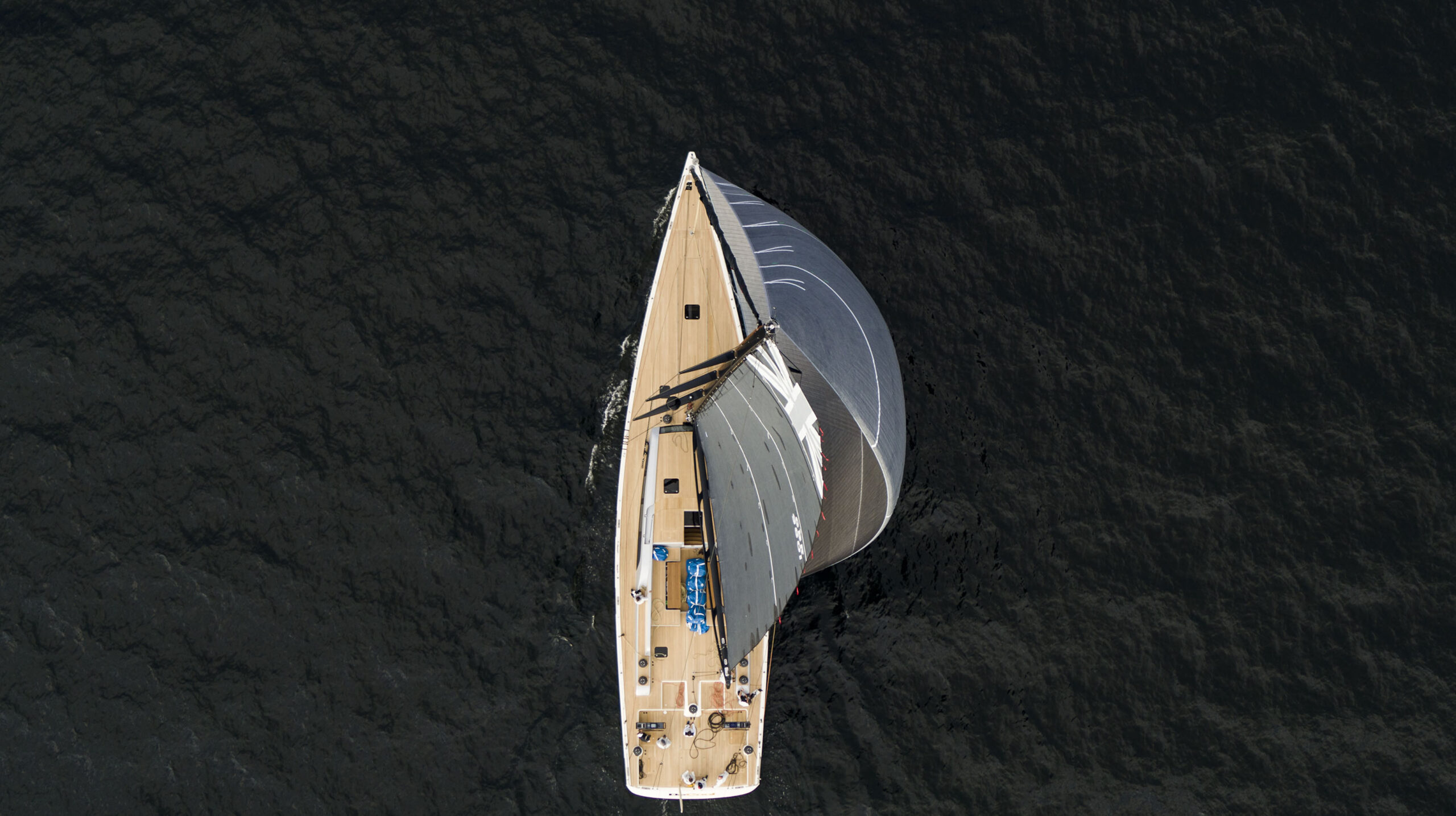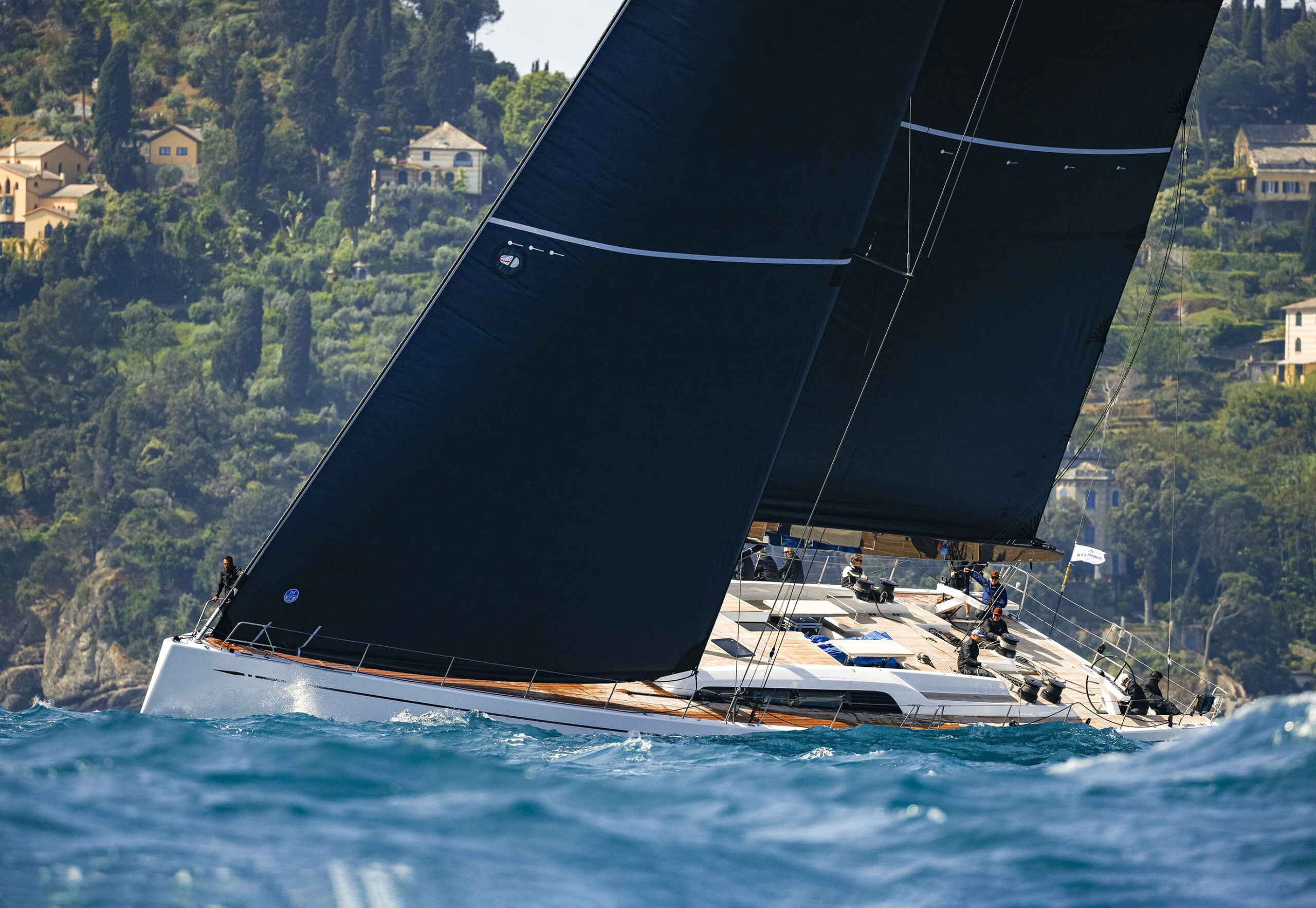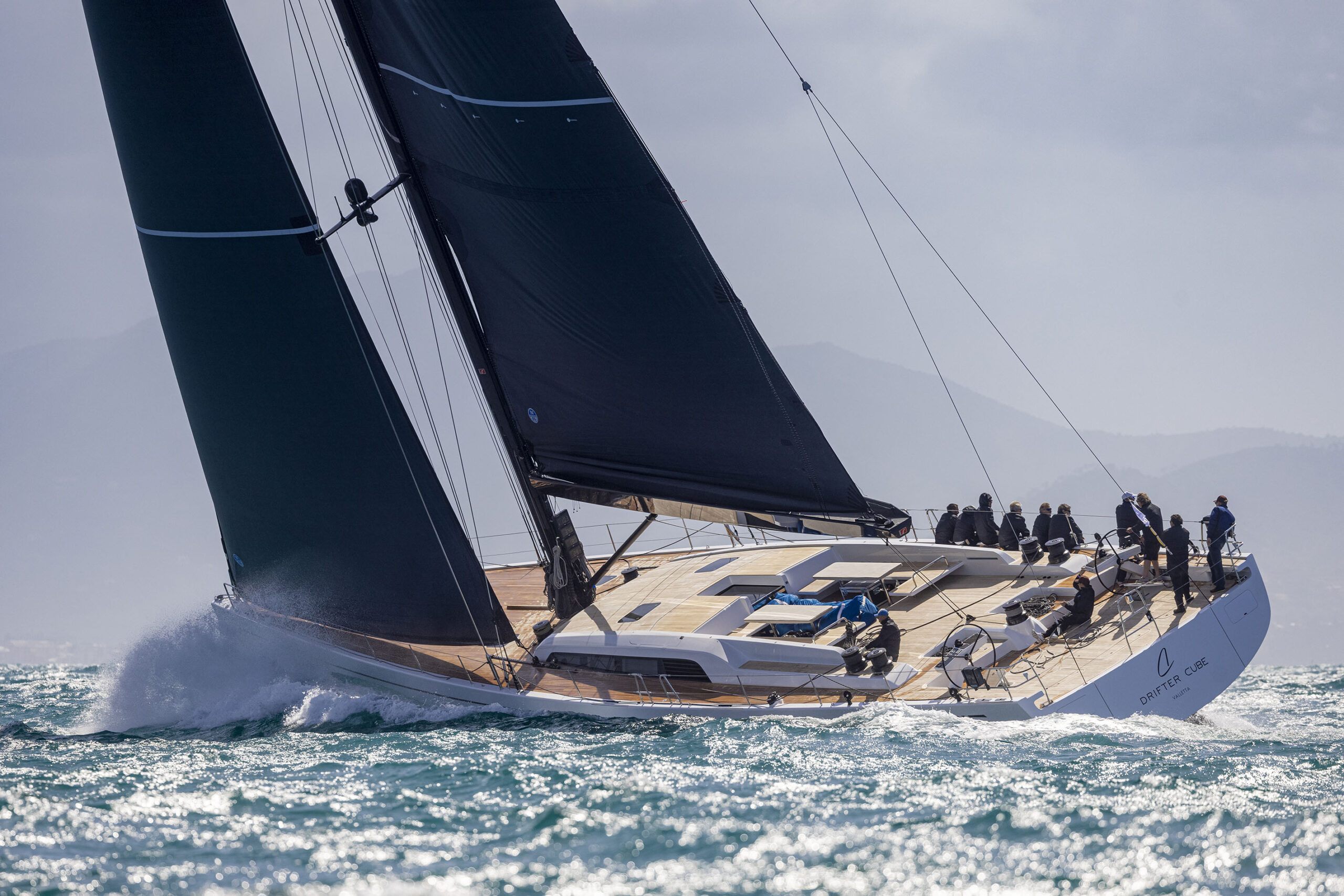Presentation
Yacht Class n°30 (sept-oct-nov 2022)
NAUTOR SWAN
In line with the Maxi Swan Yachts, the Swan 98, launched in 2020 by the famous Finnish shipyard Nautor, relies on a formidable know-how and the skills of architect German Frers to offer the owner and the crew high standards in terms of performance and on board comfort. Visit of an exceptional sailboat.
Written by: Christophe Varène – Photos: All rights reserved
Huge. Huge and organized. When boarding the Swan 98, the deck unveils its full extent and organization. Fluidity seems to be the key word of both the design and the layout of the different living and activity areas of this maxi yacht. The cockpit can thus be divided into three specific areas. The large aft deck houses two helm stations and their complete instrumentation, with the engine and bow thruster controls installed on starboard. There are also a large number of buttons to control the lights, halyards and headsail furlers. At the foot of these two light consoles and next to the hydraulic control panels, part of the floor rises to provide a horizontal inclined plane… for the comfort of the helmsman. Thanks to a clear deck plan, the helmsman enjoys a good visibility all the way to the bow. Between the two steering wheels, a Harken electric winch controls the mainsheet, with a footrest for the trimmer. In an intermediate area, there are four additional winches to trim the headsails. Finally, the front part of the cockpit is a meeting place with a nice U-shaped settee on each side and two tables leaving a central passage free. No doubt, we are in the world of very high-end sailing boats
Carbon fiber and Epoxy construction ?
This Swan 98, member of the Maxi Swan Yachts with the 88, 108 and 120, was designed, like many of her sisters, by the famous Argentinean architect German Frers, a loyal companion of the Finnish shipyard Nautor’s Swan for several decades. Her silhouette is characterized by a straight bow that optimizes the length at the waterline. She also has an important width that remains almost constant on the third aft for a better stability at the heel. The two rudders offer comfort and precision to the helmsman at all points of sail. The hull and deck construction is made of carbon fiber impregnated with Epoxy resin on a foam core, which ensures rigidity and lightness to the whole boat. The deck is covered with elegant 9mm-thick teak slats vacuum bonded with Epoxy. The standard configuration already offers a high level of equipment, yet multiple options allow each unit to be customized. Among those, at a technical and navigation level, there is in particular the telescopic keel, with a draught going from 4.90 to 3.20 m, the sail plan with a gaff headed mainsail for a surface increasing from 267.50 to 285 m2, and the extended bowsprit. Various layouts are also available with, for example, the master cabin forward or aft. But before discovering the interiors of the Swan 98, a last tour on the deck is necessary.
The cockpit is very welcoming, but also very protected thanks to a large hood stored in a discreet box located just before the main companionway. Once past the mast, where are located easily readable repeaters – a plus for racing sailors – and two winches for the halyards, we discover a uncluttered foredeck, with only one central footrest that will be very useful for the crew during manoeuvres in this area. Several lockers are present to store the sails, fenders and mooring ropes. The forward one houses the mooring system, a tilting hydraulic anchor roller invisible in navigation. To complete the exterior aspect, the transom opens wide on a garage that can accommodate a 4.00 m tender and also serves as a swim and boarding platform. On starboard, we can see the compartment housing the remote-controlled electric gangway. Let’s now explore the interiors of this Swan 98. As on the latest models launched by the shipyard, her interiors were designed by the experienced Misa Poggi. The Italian designer has imagined several atmospheres, including the Navy Traditional that plays on navy blue and white, combined with natural teak and the deeper “tobacco” shades of the fabrics and leather, or the Wine Cowes, which matches different shades of red and burgundy with the warmth of walnut. There is also a Spirit of Finland layout where the white linen and cotton are combined with the natural brown leather and the mix of light oak and walnut. The deck portholes and the deckhouse windows provide generous natural lighting to the saloon and, at dusk, the direct lighting, offered by the ceiling and wall lights, and the indirect one, especially the one fitted under the companionway steps, create a soft and warm atmosphere. If handrails frame the companionway, their absence on the ceiling is regrettable in this space that seems vast to cross when heeling.
Transoceanic cruises and regattas
The saloon is raised to both accommodate the technical room with engine and generator underneath and offer a sea view through the deckhouse windows. This place is entirely dedicated to conviviality with, on port side, a lounge with a coffered coffee table and, on starboard, a table for up to eight guests. After going down a small flight of stairs, the aft walkway passes between two guest cabins with twin beds, each with its own toilet and shower cubicle, to arrive at the full-beam master suite. It features, almost in its center, a king size bed and, on the sides, a sofa and a desk. One door leads to a large dressing room with closets and storage drawers, the other to a bathroom with shower cubicle. Forward of the saloon, on starboard, the third guest cabin has a double bed and a bathroom, again with shower cubicle. The remaining part of the layout is for the crew quarters, with first the access to the technical room under the saloon and the galley. Large and well-equipped, with among other things a large refrigerator and freezer, it also serves as a mess for the crew members. Before the vertical companionway directly leading to the foredeck, the navigation station has all the instrumentation necessary to manage all the technical dimension of the boat and the preparation and monitoring of the navigation. The Swan 98 cannot deny her origins, those of a shipyard with a remarkable expertise, both in its tradition and innovation. We can imagine her in all conditions with a large sailing program extending from transoceanic cruising to contested racing.

Technical sheet
